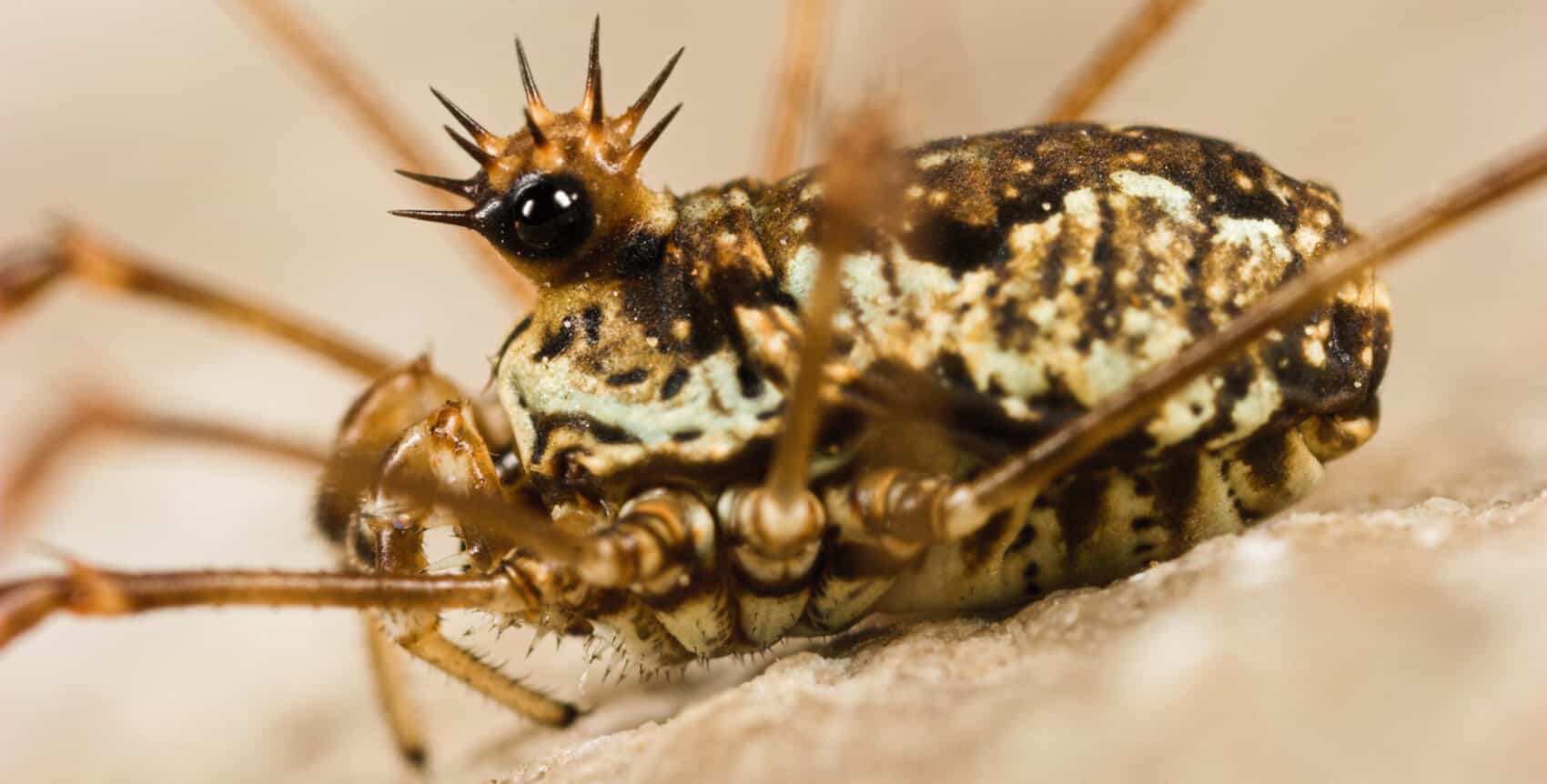Guest blog from the author Paul Richards. Paul Richards is a freelance naturalist, photographer and invertebrate recorder. He has worked as a field ecologist, curator of natural history at Museums Sheffield and is currently involved in tropical butterfly research at the University of Sheffield.
Harvestmen are spider-like invertebrates commonly seen in late summer and autumn, but species are around throughout the year. Thirty-four species have been recorded in the wild in Britain and Ireland (July 2022). New species continue to arrive, with 6 species newly added to the list since 2010.

Although harvestmen are slightly more challenging to identify than, say, butterflies and ladybirds, many actually show very distinctive and diagnostic characters in the field which can be easily recognised.
Despite this, harvestmen are relatively under-recorded. But with a little effort, you should be able to find at least 5 species in a suburban garden. By widening your search effort within your local area, to hedgerows, woodlands and damp grasslands, you will be able to find many more.
About this guide
This is the 2nd edition of the FSC’s fold-out guide to harvestmen, replacing the 1st edition from 2010. It covers the whole British and Irish list, bringing the guide fully up to date for 2022.
Like the first edition, there are photographs of each species. Separate photos of males and females are given where there is significant variation.

On the reverse side there is a comprehensive identification table, including the unique characteristics which immediately set species apart from each other. Concise guidance is given on recognising the important body features you need to examine.
To support this guide, I have created an online interactive multi-access key to harvestmen. This provides suggestions of the most likely species, based on the characters that you choose and allows you to compare images of them side by side.
What are harvestmen like?
Harvestmen belong to the arachnid order Opiliones. The group is easy to recognise. Key features include:
- 8 legs, which in some cases are very long compared to their small round body
- The second pair of legs is always the longest
- Fore and hind body are fused into a single unit (without the narrow waist of a spider)
- Only 2 eyes, usually raised on a turret called an ocularium
- Unlike spiders, they do not produce silk or produce venom
Colour in a few species can be quite variable, and is not always a reliable character, but patterning on the upper surface of the body can be diagnostic. However, other startling characters, such as crowns of spines, three-pronged tridents, horned processes and other rows of bumps and bulges can make some species very easy to recognise.
Finding harvestmen
The adults of many harvestmen species are most visible in late summer and autumn. A few species sit on walls and fences by day, and these are the easiest to find. But they are usually found close to the moist habitats and they are more active by night.
Look under stones and logs or in the ground layer of grassland. Standard collecting techniques like sweep-netting and tree beating are productive. Beating or sweeping low vegetation, shrubs and trees will reveal the species that climb. Pitfall trapping, sieving and funnel extraction will help to pick up some of the others.
The new Harvestmen guide is available at the FSC online shop at the special early-bird price of £3 until 31 August 2022.
